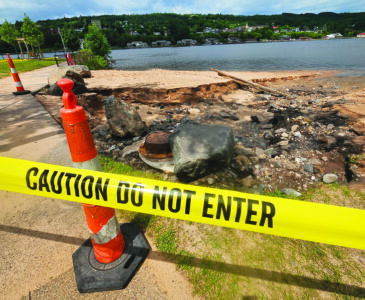Isle Royale study looks at predation, pack formation

ISLE ROYALE — A study of summer predation by wolves at Isle Royale National Park could shed light on how the new wolves are adapting to the island and what impact their arrival has on other animal populations.
The study, a collaboration between the National Park Service and the State University of New York — College of Environmental Science and Forestry (SUNY-ESF), uses GPS collars on the wolves brought to the island this year, as well as examination of the sites where they cluster.
“It can tell us whether they’re rest sites, sites they’re scavenging on prey remains, or if they’re actual locations of predation events, ” said Jerrold Belant, an environmental and forest biology professor at SUNY.
The National Park Service is bringing 20 to 30 wolves to the island over a three- to five-year period. The number stands at 14, including the two closely related wolves that had been the last remnant of the wolf population.
A two-person team is doing cluster investigations, and will be joined in mid-summer by two more, Belant said. A research scientist will also join the team next month.
The team looks at GPS clusters to determine predation of species such as moose calves, snowshoe hare and beaver.
The collars have not only GPS devices, but accelerometers, allowing researchers to match sites with the wolves’ behavior, Belant said.
The GPS clusters also tell researchers what wolves are near each other, allowing them to see the beginnings of pack formation. Last month, the park reported a female wolf relocated from Minnesota in September traveling with two males brought to the island from Michipicoten Island in Ontario.
Researches have used the GPS signals to track down two new additions who died on the island.
The collar of a wolf brought to the island from Canada in February started sending a mortality signal the next month. Once the team was able to arrive on the island, it tracked the wolf to an inland swamp where its carcass was found.
The state of the body did not allow staff to determine a cause of death.
Another new wolf brought to the island from Minnesota last fall was determined to have died of pneumonia.
Wolf survival numbers are on par to those in the wild in the Upper Peninsula, about 75% per year, park staff said.
The study should last about five years, Belant said. Belant is also part of the Michigan predator-prey and Upper Peninsula deer movement studies.
He said he is excited about being able to quantify and clarify what wolves do in the summer on the island.
“Wolves have been studied there for a long time, but predation, diet or forging during the summer period have not,” he said.




